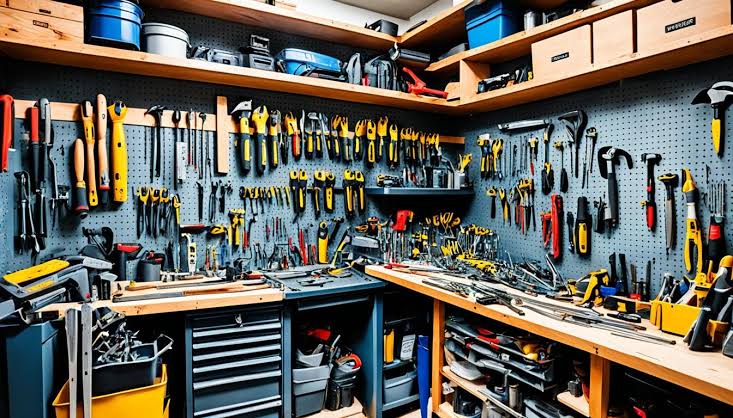Efficient organization is key to maximizing productivity and ensuring that your tool store remains functional and accessible. Whether you run a professional tool store or simply want to organize your collection, a well-structured tool store can make a significant difference. Here’s a comprehensive guide to organizing your tool store efficiently.
1. Assess Your Space
First of all, before arranging your tool store, check the space you have. Figure out how you will utilize the space in the store, such as where your shelves and cabinets will be placed or what arrangement of all storage areas goes where. This will enable to you know the possible storage solutions that can be implemented.
2. Categorize Your Tools
The best way to start organizing is to categorize your tools. Organize items by type. Then sort their subcategories by type/usage. Putting a clear title to these categories will help you and your customers locate what they need.
3. Invest in Quality Storage Solutions
However, Investing in good storage solutions would help keep the tool store organized. Shelving units and tool cabinets are especially good for hand tools and accessories, as they can be easily seen and accessed. For the sets that you are not using, and when you have more valuable/delicate items to protect from all of those rotary sanding bits, tool cabinets can help keep it protected, organized, and in one place. Make sure that the storage options you pick up are robust, and they correspond to your tools in size and weight.
4. Implement a Tool Inventory System
Keeping track of your tools is essential for both organization and inventory management. Implement a tool inventory system to monitor stock levels, track tool usage, and manage reordering. Use inventory management software or a simple spreadsheet to record details such as tool names, quantities, and locations. Regularly update this system to reflect any changes.
5. Maximize Vertical Space
Utilizing vertical space is a smart way to increase storage capacity without requiring more floor space. Install high shelving units or cabinets that reach up to the ceiling. This can be especially useful for storing less frequently used tools or bulk items. Use ladder shelves or step stools to access high shelves safely and efficiently.
6. Create an Efficient Workflow
Organizing your tool store should also consider the workflow and the ease of access. Place frequently used tools in easily accessible areas, such as near the checkout counter or in the front of the store. Arrange tools in a logical sequence based on how customers or you will use them. For instance, hand tools should be placed near the power tools, and related accessories should be grouped together.
7. Maintain Cleanliness
Maintaining cleanliness is an integral part of an organized tool store. Regularly clean shelves, cabinets, and work areas to remove dust and debris. Encourage staff to return tools to their designated places after use and to keep the store tidy. A clean tool store not only looks more professional but also helps in prolonging the lifespan of your tools.
8. Use Clear Signage
Clear signage helps both staff and customers navigate the tool store efficiently. Use large, legible signs to indicate different sections or categories of tools. This can significantly reduce the time spent searching for specific items and improve the overall shopping experience.
9. Consider Customer Needs
If you run a tool store for customers, consider their needs and preferences when organizing your space. Offer easy-to-read product labels and organize tools in a way that makes it simple for customers to find and compare products. Providing a comfortable shopping environment with well-organized displays can enhance customer satisfaction and increase sales.
10. Regularly Review and Adjust
Lastly, regularly review and adjust your organization system as needed. Monitor the effectiveness of your storage solutions and inventory system. Solicit feedback from staff and customers to identify areas for improvement. Being flexible and willing to make adjustments will help you maintain an efficient and organized tool store.
In conclusion, organizing your tool store efficiently involves a combination of strategic planning, investment in quality storage solutions, and regular maintenance. By following these guidelines, you can create a well-organized tool store that enhances productivity, improves customer satisfaction, and ensures that your tools are easily accessible when needed.






